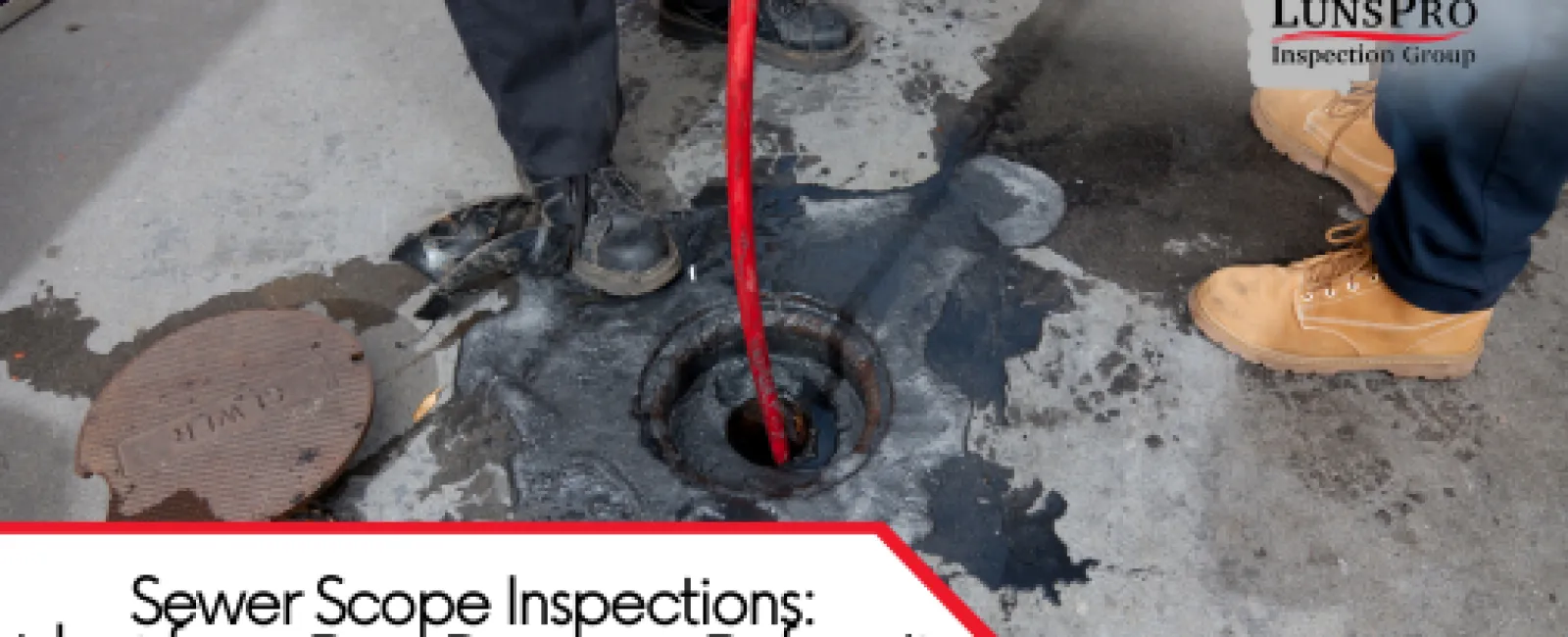When it comes to maintaining a home's plumbing system, one of the most overlooked yet essential tools in a certified home inspector's toolkit is the sewer scope inspection. A sewer scope involves using a specialized camera to examine the condition of the drain lines from the house to the public sewer connection. This process reveals hidden issues that can lead to significant repair costs if left unaddressed.
One common finding during these inspections is pipe scaling, rusting, and cracking, which can compromise the functionality of the drainage system. Understanding what these issues look like—and knowing who is responsible for repairs—is critical for homeowners, buyers, and real estate professionals.
Why Sewer Scope Inspections Matter
Many homebuyers focus on visible aspects of the property—roof condition, structural integrity, and interior finishes—but what's underground is equally important. Sewer lines are responsible for moving wastewater away from the home. If these lines are damaged, blockages, sewage backups, or environmental hazards can occur.
Sewer scope inspections help identify:
-
Material type and condition of pipes
-
Cracks, breaks, or collapses in the line
-
Scaling and rust in older materials like cast iron
-
Blockages from debris or tree roots
-
Water flow issues caused by misaligned or sagging sections
A Common Scenario: Cast Iron Pipe Wear and Damage in the Public Line
In many older homes, the 4-inch cast iron sewer line connects the house to the larger 6-inch public line. Cast iron was once a standard material for sewer pipes due to its durability, but over time it is prone to scaling and rusting inside the pipe walls.
Scaling occurs when layers of corrosion build up, gradually narrowing the inside diameter of the pipe. This restricts water flow and can lead to clogs. Rusting can weaken the pipe structure, making it more susceptible to cracks and breaks.
A sewer scope inspection might reveal these signs of wear, along with more serious issues further down the line.
The Tell-Tale Signs of a Pipe Break
During a sewer scope, certain visual cues indicate a problem. For instance, when inspecting the 6-inch portion of the public sewer line, inspectors may notice:
-
Sharp Edges: Jagged or uneven surfaces inside the pipe, a clear indicator of cracking or a break.
-
Dirt at the Bottom of the Pipe: In a sealed gravity-fed sewage system, there should be no dirt visible inside. The presence of soil means that the pipe has been compromised, allowing surrounding earth to enter the system.
A break like this disrupts the normal flow of wastewater and creates the potential for further collapse or infiltration from outside materials.
Public vs. Private Line Responsibility
One of the most important aspects of sewer line ownership is knowing where private responsibility ends and public responsibility begins.
Typically, the homeowner is responsible for the portion of the sewer line running from the house to the property's edge—often the 4-inch line. The larger 6-inch public line is maintained by the local municipality or utility provider.
If a break occurs in the public portion, the homeowner is not financially responsible for the repair. In fact, the county or city will typically send a crew to inspect and replace the damaged section, often with modern PVC piping. They may also install a cleanout access point for easier maintenance in the future.
This distinction can save a homeowner thousands of dollars in repair costs—one of the many reasons a sewer scope inspection is so valuable during a home purchase.
How a Certified Home Inspector Conducts a Sewer Scope
A certified home inspector uses a waterproof, high-resolution camera attached to a flexible cable to navigate through the sewer line. The process generally involves:
-
Accessing the Cleanout - The camera is inserted into the pipe from the home's sewer cleanout point.
-
Recording Every 10 Feet - Many inspectors capture images or short video segments at set intervals to document changes in pipe condition.
-
Identifying Material Transitions - A shift from 4-inch cast iron to 6-inch PVC, clay, or concrete is noted.
-
Flagging Problem Areas - Cracks, root intrusion, scaling, or dirt accumulation are recorded for the inspection report.
-
Explaining Findings - The inspector provides the homeowner or buyer with a clear breakdown of the results, including potential repair costs and responsibility.
Common Materials Found in Sewer Lines
Understanding the materials used in a sewer system can help homeowners anticipate potential problems:
-
Cast Iron: Strong but prone to rust and internal scaling over time.
-
PVC (Polyvinyl Chloride): Durable, resistant to corrosion, and smooth inside, which helps prevent buildup.
-
Clay Tile: Found in older homes, resistant to chemical corrosion but can crack easily under shifting soil.
-
Concrete: Very durable but can erode internally over decades.
Prevention and Maintenance Tips
Even if a sewer scope reveals no immediate issues, proactive maintenance can extend the lifespan of the system:
-
Limit Grease Disposal: Cooking fats and oils solidify inside pipes, contributing to blockages.
-
Avoid Flushing Non-Flushables: Items like wipes, paper towels, and feminine hygiene products can cause clogs.
-
Schedule Periodic Scopes: Especially for older homes or properties with large trees nearby, regular inspections can catch early signs of trouble.
-
Install a Backflow Preventer: Protects the home from sewage backups during heavy rain or flooding events.
Why Sewer Scope Inspections Should Be Part of Every Home Purchase
While not always included in a standard home inspection, adding a sewer scope inspection provides peace of mind. Many issues lie deep underground where they can't be seen without specialized equipment.
By uncovering hidden damage before a sale closes, buyers can negotiate repairs or factor future costs into their decision. For sellers, providing a clean bill of health for the sewer system can make a home more appealing to potential buyers.
A broken sewer line can be one of the most expensive repairs a homeowner faces—but a professional sewer scope inspection can identify problems before they escalate. Whether it's scaling in a cast iron pipe or a break in the public line, knowing the condition of your drainage system helps you make informed decisions and avoid surprise repair bills.
With the expertise of a certified home inspector, homeowners and buyers alike gain valuable insight into one of the most critical, yet hidden, parts of the property. In some cases, issues found in the public line can even be repaired at no cost to the homeowner, saving thousands and ensuring the system runs smoothly for years to come.

